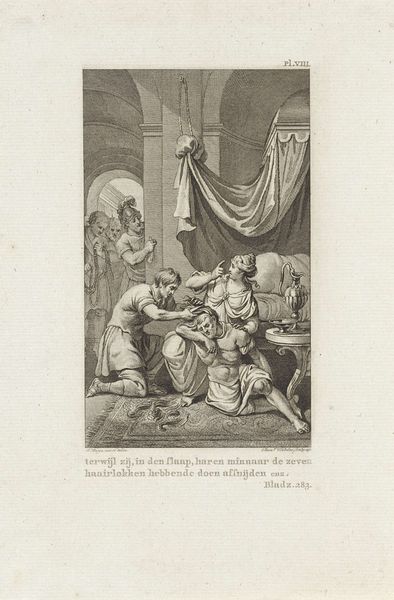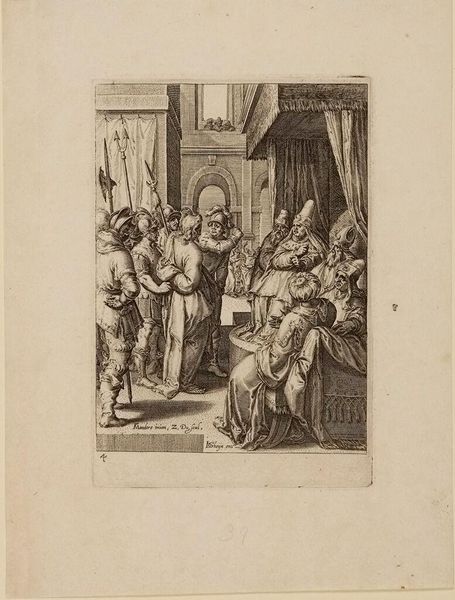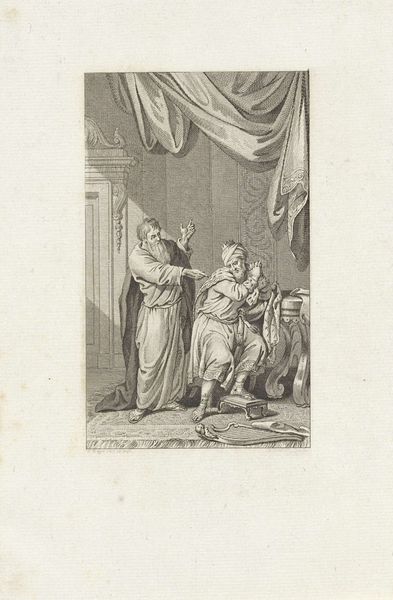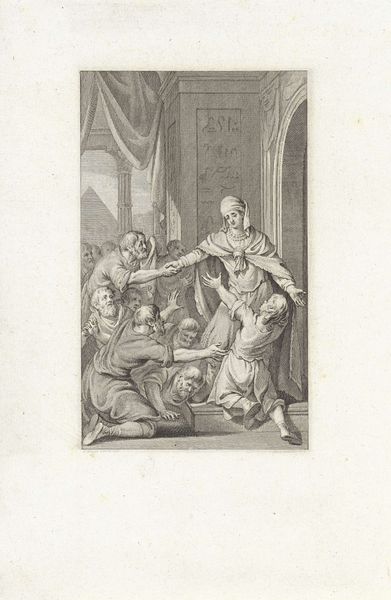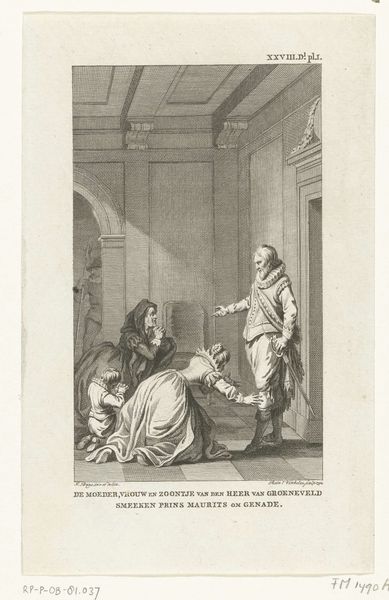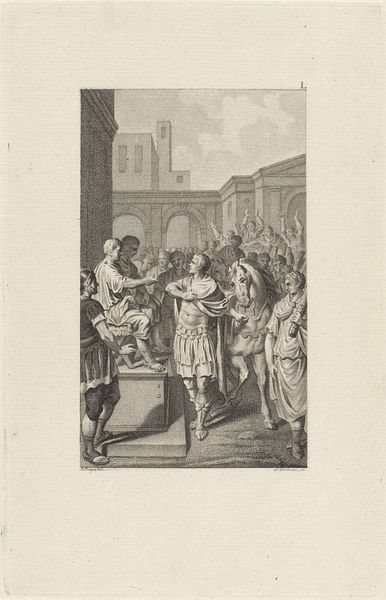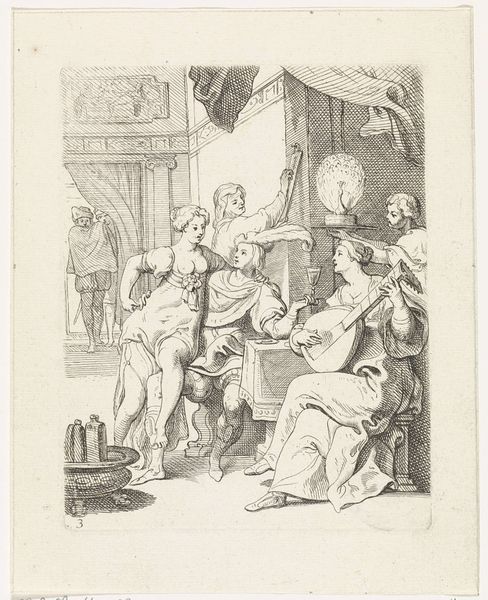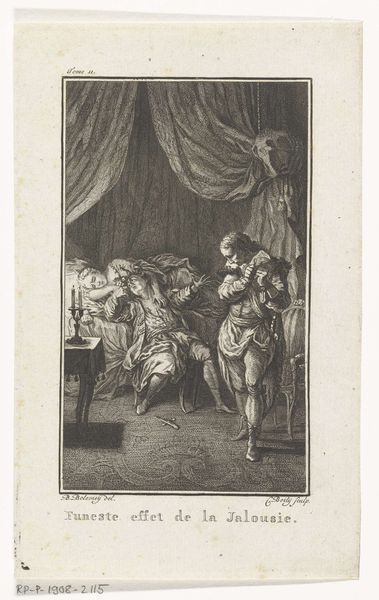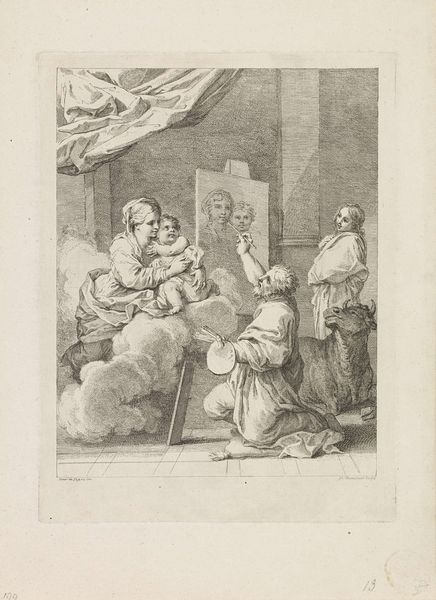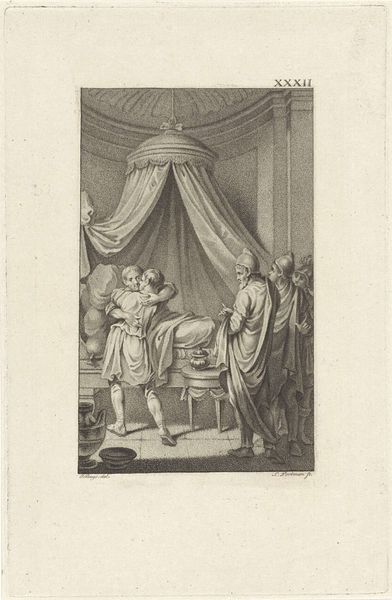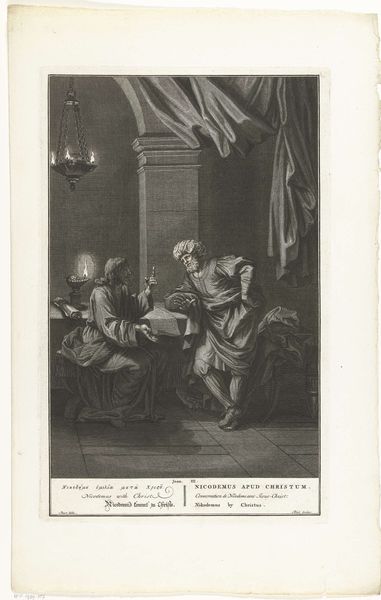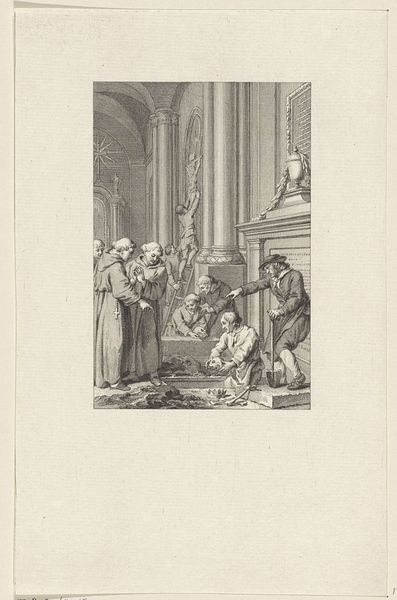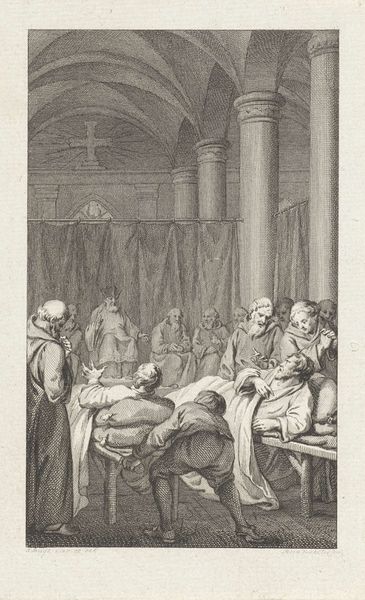
print, engraving
#
neoclacissism
#
narrative-art
# print
#
old engraving style
#
figuration
#
line
#
history-painting
#
engraving
Dimensions: height 207 mm, width 136 mm
Copyright: Rijks Museum: Open Domain
Curator: Well, it looks bleak. The Suicide of Hannibal—an engraving made around 1796 by Ludwig Gottlieb Portman, here at the Rijksmuseum. Very fine line work, isn't it? Editor: Bleak, yes, like a stage play in its final act. And there's Hannibal, right in the center, dramatically poised. He’s even got the Roman drapery going on. All that’s missing is a good soliloquy. Curator: Exactly! Portman worked within the Neoclassical style, popular back then, which loved grand narratives and moralizing scenes. The composition is very stage-like—note the arched doorway at the back—a classic backdrop. It echoes the ideals of order, reason, and the gravitas of historical moments. Editor: That cup he's holding… the ultimate symbol of a poisoned chalice. A potent and economical gesture, and how the image tells us about pride, loss, and maybe a little bit about accepting one's fate. Curator: I find the symbolism layered, actually. Beyond the obvious death wish, Hannibal’s seated pose… It's as though he’s taking control of his own narrative—refusing to be captured. It’s his final act of defiance against Rome. The soldiers looming nearby also represent doom, fear and the collapse of his known world. Editor: And there's something inherently compelling in how those images carry meaning over centuries. The act of drinking the poison is really just a final scene, one that builds off what we culturally carry. His stance is one we recognize, even today, in various moments of finality. Curator: Absolutely. Even now, thinking about Hannibal, most recognize his strategic brilliance, but also perhaps his tragic flaw: his stubbornness. The way Portman visualized this, it isn't just about one man's end; it reflects how choices can impact entire civilizations. Editor: I suppose it’s true… The image also lets us see past his genius and makes him relatable through tragedy, humanizes him. Thanks to this image, Hannibal becomes almost archetypal in a certain sense, the man who would rather end it all than be defeated. Curator: Yes, and perhaps this neoclassical portrayal elevates a real event into myth! And that gives us something to grapple with centuries later! Editor: Indeed! It makes us ask: is it bravery or just…theatrics?
Comments
No comments
Be the first to comment and join the conversation on the ultimate creative platform.
